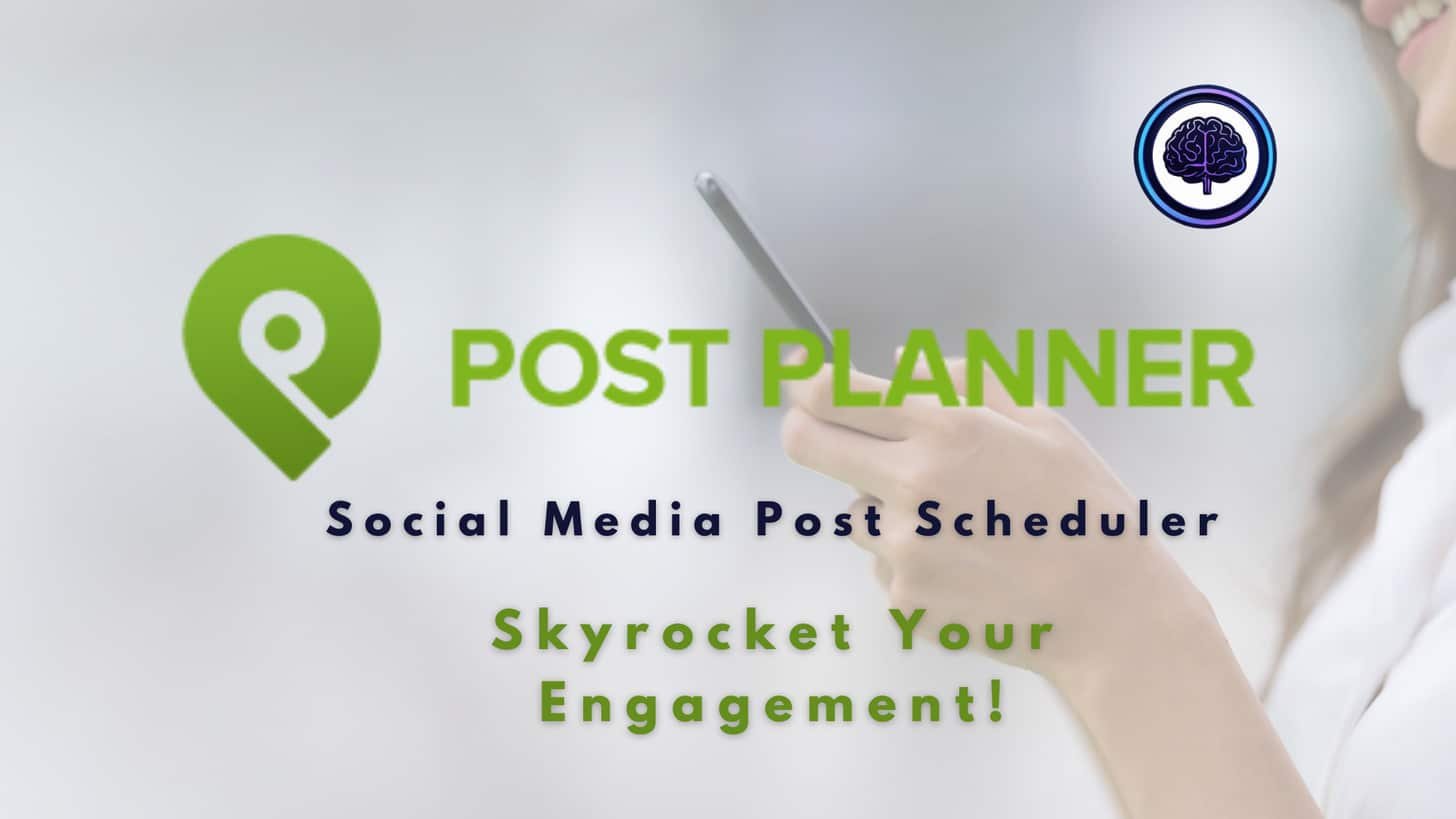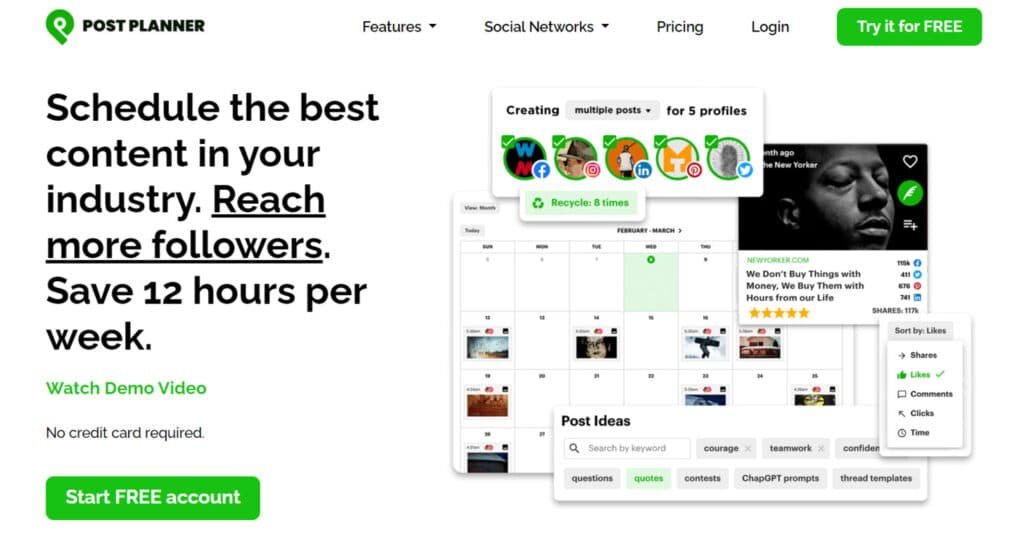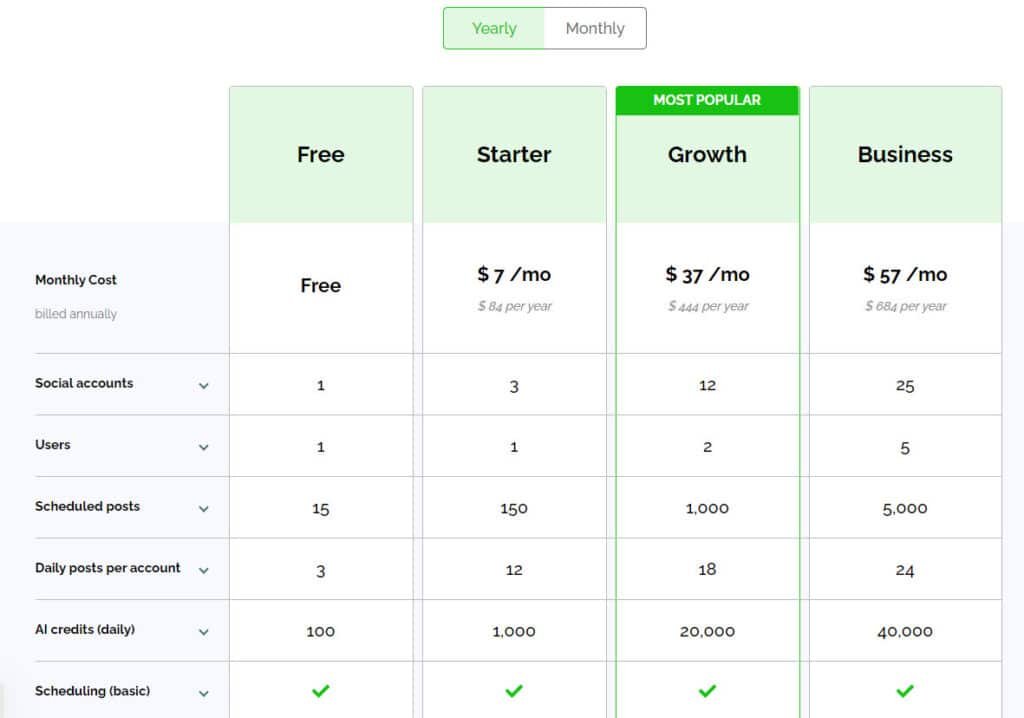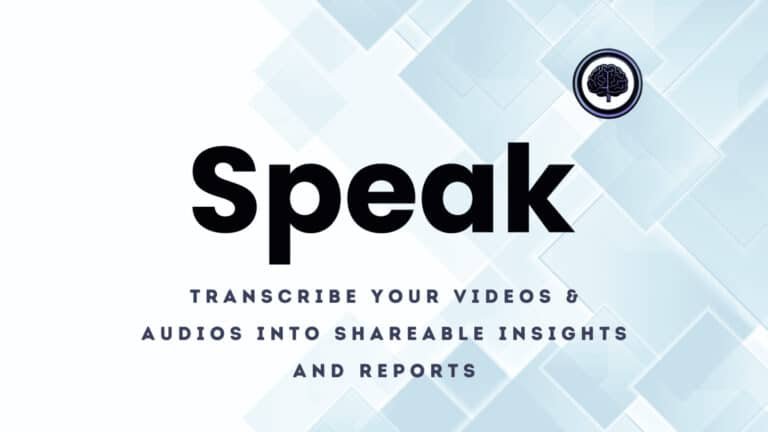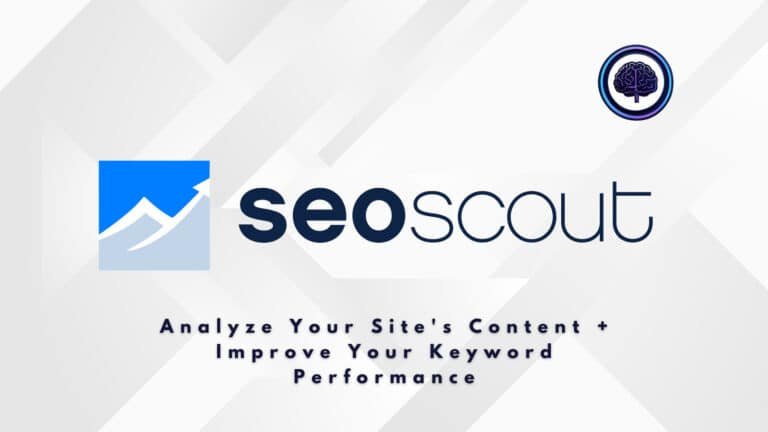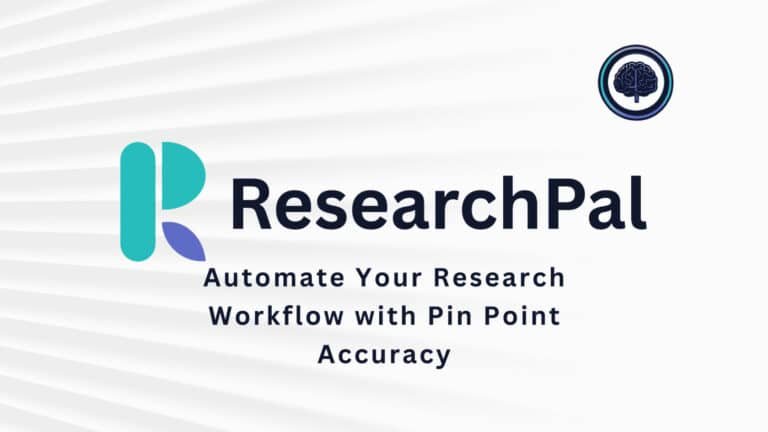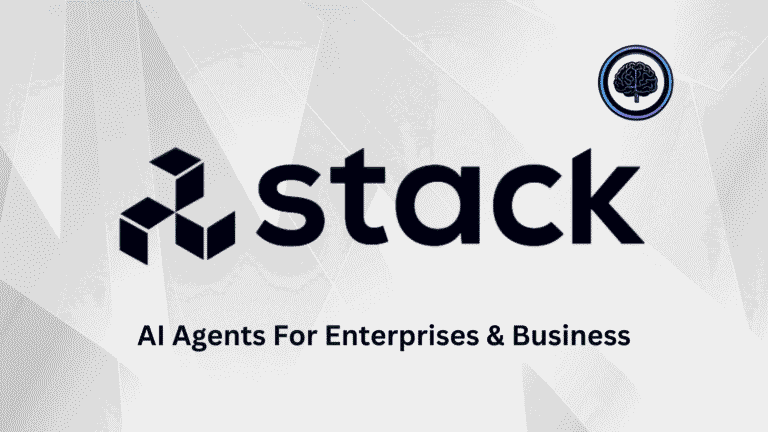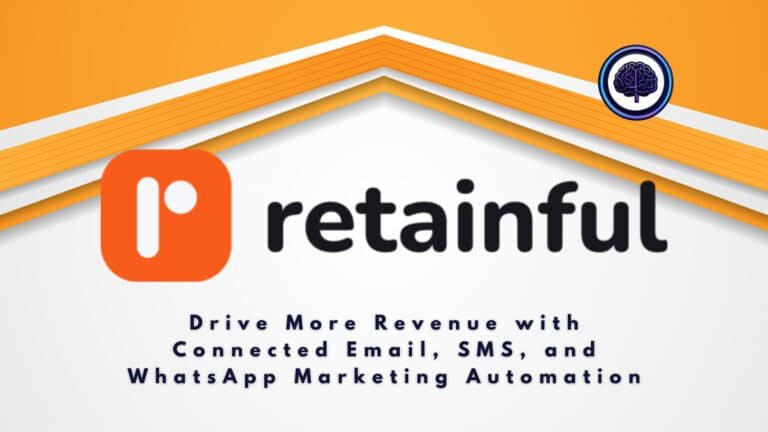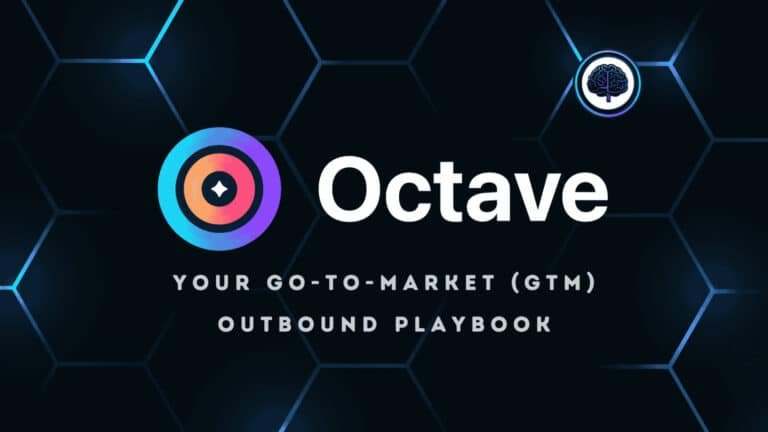Problem: You’re juggling multiple accounts, endless content ideas, and a calendar that never fits the day. Social media demands consistency, but posting manually costs you time and focus.
Agitation: That constant switching between apps, losing track of best-performing posts, and wasting hours on timing is frustrating. It ruins your flow and makes growth feel random instead of strategic.
I’ve used post planner across Instagram, Facebook, LinkedIn, X, TikTok, YouTube, Pinterest and Google Business. This tool combines AI post creation, bulk scheduling, content discovery, evergreen recycling, and a smart scheduler to cut that busywork down.
In this review you’ll get a clear look at core features, pricing tiers (including Free, Starter, Growth, Business), real-world time savings, and who benefits most—bloggers, small teams, and solo marketers. Expect honest pros and cons and practical examples of improving engagement with smarter times and recycling.
Action: Ready to see if this is the right way to save time and boost engagement? Let’s dive in.
Key Takeaways: Post Planner Review
- One dashboard to schedule across major social media platforms.
- AI Post Creator and bulk uploads speed up content workflows.
- Smart scheduler and content buckets help boost engagement over time.
- Pricing scales from Free to Business—analytics increase with higher tiers.
- Best fit for bloggers, small businesses, and lean marketing teams.
Introduction to Post Planner
In a crowded AI era, you want a simple workflow that actually saves time and keeps your feeds fresh. This tool was built by social media marketers for social media marketers, and that practical origin shows in daily workflows.
It centralizes scheduling, AI-assisted copy, content discovery, and automation so solo creators and small teams don’t juggle half a dozen apps.
Where It Fits in Today’s AI-Powered Social Media Landscape
Post Planner sits in the “do-more-with-less” camp. It uses AI to speed writing, pick smart times, and refill your queue without spreadsheet chaos. For teams focused on efficiency, that means fewer context switches and more consistent posts.
Who Created It and Who Uses It
The company behind this platform was founded by marketers solving their own scheduling headaches. Typical users include bloggers, small businesses, creators, and lean marketing teams who publish across Instagram, Facebook, LinkedIn, X, TikTok, YouTube, Pinterest, and Google Business.
What It’s Built to Do for Marketers and Small Businesses
Purpose: save time, keep a steady cadence, and drive engagement. The app combines content buckets, evergreen recycling, and a queue-first calendar so your audience sees you regularly—without living inside a dashboard.
“Schedule smarter, recycle what works, and keep your feed balanced.”
| Need | How This Tool Helps | Typical User |
|---|---|---|
| Save time on writing | AI Post Creator adapts copy per platform | Solo creators, bloggers |
| Consistent posting | Content buckets & evergreen recycling | Small businesses, agencies |
| Cross-platform management | One dashboard for major networks | Lean teams |
- Note: analytics are available but limited; heavy metric users may need extra tools.
What Is Post Planner?
This tool acts like a traffic director for your content, routing posts to the best times and platforms. It combines a queue-based scheduler, smart-time recommendations, and simple content buckets so you build a plan once and let the system run it.
How the Scheduler, Queues, and Smart Times Work Together
Queues store batches of content—add dozens via spreadsheet or RSS and the queue fills your calendar automatically.
Smart times analyze account performance and suggest optimal posting windows, so you don’t check analytics every day. Set slots by day/time and enable smart scheduling to hit peak audience moments.
The scheduler honors platform-specific tweaks: customize captions, hashtags, and media sizes per network before publishing. Shuffle prevents repetitive sequences so feeds feel natural.
Ideal Users: Solo creators, bloggers, and lean teams
For solo creators and bloggers, batch scheduling cuts weekly workload. Small teams get a shared dashboard to see what’s planned and where gaps exist.
Mobile editing keeps the plan flexible—update a queued item on the go and maintain a consistent cadence even during busy stretches.
“When queues, smart times, and recycling work together, publishing stays steady without constant oversight.”
| Need | How it helps | Best for |
|---|---|---|
| Save time on bulk posting | Spreadsheet/RSS import + queues | Bloggers, content teams |
| Improve timing | Smart times suggest optimal slots | Solo creators, small businesses |
| Keep feeds varied | Shuffle + content buckets | Agencies, multi-page managers |
Best Features of Post Planner
Post Planner is an AI-powered social media management tool focused on content curation, scheduling, automation, and analytics to help users discover viral content, automate posting, and grow engagement across platforms.
Below is a comprehensive breakdown of all features.
This covers basic to premium capabilities, AI integrations, supported networks, content sources, and more. Note that mobile support is available via a mobile app for creating and managing posts on the go.
1. Supported Social Networks
Post Planner simplifies social media management by enabling scheduling and publishing across 10 platforms from a single dashboard.
This centralized approach streamlines workflows, ensuring businesses can manage social media efficiently, saving time and boosting reach.
For readers seeking a tool to handle multiple social media accounts, Post Planner offers a seamless way to maintain a consistent presence, driving audience engagement without the hassle of switching apps.
1.1 Platforms
Post Planner supports posts on Facebook (pages/profiles), Instagram (posts, Reels, Stories, carousels), Threads, Google Business Profile, LinkedIn (profiles/pages), Pinterest, TikTok, Twitter/X, YouTube, and Bluesky. This broad compatibility ensures businesses can reach diverse audiences across social media platforms, making Post Planner ideal for those needing versatile social media content distribution.
1.2 Cross-Platform Management
With Post Planner, users can manage all social media accounts in one dashboard, customizing captions, hashtags, and media sizes per platform to avoid duplicates. This feature helps readers who want tailored content for each network, ensuring posts resonate with specific audiences, enhancing engagement and preventing repetitive social media content.
1.3 How it Works
Accounts connect via secure API integrations, allowing users to schedule, preview, and publish posts directly through Post Planner. This streamlined process benefits readers by reducing setup time, enabling quick deployment of social media campaigns across multiple channels.
1.4 Benefits
Post Planner increases reach, with users reporting millions in post impressions. It supports diverse content types (videos, images, text), helping readers grow their audience by leveraging Post Planner’s ability to manage social media efficiently, ensuring consistent publishing without manual effort.
2. Content Discovery and Curation
Post Planner’s content curation tool uses AI to suggest high-performing, industry-specific content, helping users fill their social media feeds with engaging material. For readers searching for viral content ideas, this feature saves time and ensures posts align with trending topics.
2.1 Basic Content Curation
Post Planner curates articles up to 7 days old from sources like Facebook, LinkedIn, Reddit, YouTube, Google, Giphy, RSS feeds, and Unsplash. Users can favorite content and save unlimited streams, making it easy for readers to find relevant social media material quickly.
2.2 Keyword and Niche Discovery
By searching keywords or niches, Post Planner surfaces quotes, memes, headlines, and news tailored to an audience. This helps readers seeking fresh content ideas, reducing brainstorming time and ensuring posts align with current social media trends.
2.3 Plus Content Curation
Post Planner’s Plus tier offers access to viral media and older texts, plus trending articles, quotes, and contests. For readers aiming to boost engagement, this feature ensures posts are high-impact, leveraging AI to identify what drives clicks on social media.
2.4 How it Works and Benefits
Users search via Post Planner’s AI-driven interface, which ranks content by engagement metrics. This saves readers 10 hours weekly, with Post Planner delivering posts that drive up to 13,677% engagement, making it a vital tool for social media management.
3. Design and Media Editing Tools
Post Planner provides integrated design tools to create professional posts without external software. Readers looking to enhance social media visuals will find these tools efficient for crafting engaging content.
3.1 Stock Media and Editing
Post Planner offers Unsplash stock photos/videos and Giphy GIFs, with a built-in Studio for editing (crop, resize, text/overlays). This helps readers create polished social media visuals quickly, improving post appeal.
3.2 Canva Integration
Post Planner integrates with Canva for advanced design, including templates and animations. Readers benefit from seamless access to professional tools, ensuring posts stand out on social media.
3.3 Built-In Design Tools
The built-in editor in Post Planner allows users to finalize visuals without switching apps. This streamlines workflows for readers, enabling rapid creation of social media content that drives clicks.
3.4 How it Works and Benefits
Users drag-and-drop media in Post Planner, previewing posts across platforms. This feature supports readers by reducing design time, with Post Planner helping achieve 12x follower growth through eye-catching social media visuals.
4. Post Creation and Optimization
Post Planner streamlines post creation with AI-driven tools, ensuring posts are optimized for each platform. Readers seeking efficient social media management benefit from faster workflows and higher engagement.
4.1 Compose and Optimize
Post Planner allows writing captions, adding hashtags, and optimizing for platform-specific requirements. This ensures readers’ posts are tailored, maximizing social media impact.
4.2 AI Post Creator with Live Previews and Saved Snippets
Post Planner’s AI drafts captions and hashtags, with live previews for adjustments. Saved snippets for CTAs/hashtags speed up campaigns, helping readers maintain consistency across social media posts.
4.3 AI-Powered Generation
Using OpenAI, Post Planner generates content ideas and captions (2-3 AI credits/word). Readers benefit from automated creativity, reducing post creation time by 85%.
4.4 Categorize and Buckets
Post Planner organizes posts into topic-based buckets, aiding readers in planning themed social media campaigns for cohesive branding.
4.5 How it Works and Benefits
Post Planner’s real-time previews and AI optimizations ensure posts are effective. Readers save time, with Post Planner enabling consistent, high-engagement social media content.
5. Scheduling and Automation
Post Planner automates social media scheduling, reducing manual effort. Readers looking to save time benefit from Post Planner’s ability to maintain a consistent posting plan.
5.1 Basic Scheduling
Post Planner offers post recycling, bulk uploads, and calendar views. This helps readers schedule posts efficiently, ensuring a steady social media presence.
5.2 Plus Scheduling
Post Planner’s Plus tier includes unlimited drafts, tagging, and first comments. Readers can enhance posts with automated replies, boosting social media engagement.
5.3 Smart Scheduler
Post Planner’s AI suggests optimal posting times and shuffles queues to avoid repetition. This ensures readers’ posts reach audiences at peak times.
5.4 Buckets and Evergreen Recycling
Post Planner organizes content in buckets for rotation and re-queues evergreen posts. Readers benefit from sustained engagement with minimal effort.
5.5 Bulk Import
Post Planner supports CSV/RSS imports for scheduling multiple posts. This saves readers time, enabling rapid social media plan execution.
5.6 Drag-and-Drop Reordering and Published Posts
Post Planner allows reordering schedules and monitoring live posts. Readers can adjust plans easily, ensuring flexibility in social media management.
5.7 How it Works and Benefits
Post Planner automates schedules, cutting work to 30 minutes/week. Readers achieve 85% less effort, with Post Planner driving quadrupled posting frequency.
6. Analytics and Performance Tracking
Post Planner provides insights to optimize social media posts. Readers seeking data-driven strategies benefit from actionable metrics.
6.1 Full Metrics Tracking
Post Planner tracks reach, engagement, and clicks. Readers can analyze post performance to refine social media strategies.
6.2 Basic Analytics
Post Planner highlights top posts, guiding readers to focus on high-impact content for better results.
6.3 One-Click Re-Queue
Post Planner re-schedules high-performers with one click, helping readers maximize social media reach.
6.4 Industry Analysis
Post Planner scans viral content for benchmarking. Readers can align posts with social media trends.
6.5 How it Works and Benefits
Post Planner’s dashboards and reports help readers boost engagement (e.g., 26,777% reach increase), optimizing social media plans.
7. AI Integrations and Credits
Post Planner leverages OpenAI for automation and creativity. Readers benefit from smarter social media workflows.
7.1 Key AI Features
Post Planner automates scheduling and generates content. This saves readers time on routine social media tasks.
7.2 AI Credits System
Post Planner allocates daily credits for AI tasks. Readers can scale content creation based on their plan.
7.3 How it Works and Benefits
Post Planner’s AI integrates with curation and scheduling, automating 80% of tasks for readers, enhancing social media efficiency.
8. User Management and Collaboration
Post Planner supports team workflows, ideal for readers managing social media teams.
8.1 Multi-User Support
Post Planner allows up to 15 users (Enterprise). Readers can assign roles, streamlining team social media efforts.
8.2 How it Works and Benefits
Post Planner enables collaboration on posts, helping readers scale social media management without bottlenecks.
9. Mobile App
Post Planner’s mobile app ensures flexibility for social media management. Readers can manage posts on the go, maintaining workflows anywhere.
9.1 Capabilities
The Post Planner app supports creating, scheduling, and analyzing posts. Readers benefit from full functionality via iOS/Android.
9.2 How it Works and Benefits
Post Planner syncs with the desktop dashboard, offering seamless social media management. Readers appreciate the ease, as noted in reviews.
10. Additional Capabilities and Support
Post Planner offers updates and support to enhance usability. Readers benefit from a reliable social media tool.
10.1 Integrations
Post Planner integrates with RSS, OpenAI, and Canva, expanding content options for readers.
10.2 Ease of Use
Post Planner’s intuitive interface, praised in reviews, simplifies social media tasks for readers.
10.3 Support
Post Planner provides email/chat support, ensuring readers resolve issues quickly.
10.4 Security and Compliance
Post Planner ensures secure connections, giving readers confidence in social media data safety.
10.5 How it Works and Benefits
These features make Post Planner a “game changer,” helping readers save time and grow social media presence, as 358,000+ businesses attest.
“These features combine to cut busywork—so you spend less time on logistics and more on creative growth.”
Pricing
Pricing here is simple to scan—pick the tier that matches how many accounts and AI credits you use.
Free — Good for testing: 1 social account, 15 scheduled posts, 3 daily posts/account, 100 AI credits/day, no analytics. Use this to try content creation before upgrading.
Starter — $7/mo billed annually ($12 monthly). Supports 3 profiles, 150 scheduled posts, 12 daily posts/account, 1,000 AI credits/day. Advanced scheduling and analytics remain locked here.
Growth — $37/mo billed annually ($49 monthly). Best for most teams: 12 accounts, 1,000 scheduled posts, 18 daily posts/account, advanced scheduling, content tools, and full analytics with 20,000 AI credits/day.
Business — $57/mo billed annually ($79 monthly). For heavy workflows: 25 accounts, 5,000 scheduled posts, 24 daily posts/account, 40,000 AI credits/day, full features and team collaboration. Email and chat support available across plans.
Practical tip: Monthly billing costs more; annual saves money. If you manage more than a couple profiles or need analytics, you’ll likely land on the Growth tier.
| Plan | Accounts | Scheduled Posts | Daily Posts/Account | AI Credits/Day |
|---|---|---|---|---|
| Free | 1 | 15 | 3 | 100 |
| Starter ($7/yr) | 3 | 150 | 12 | 1,000 |
| Growth ($37/yr) | 12 | 1,000 | 18 | 20,000 |
| Business ($57/yr) | 25 | 5,000 | 24 | 40,000 |
Pros & Cons
Here’s a clear look at what works and what doesn’t before you commit.
Pros
Speed and consistency are the main wins.
- One dashboard for multi-platform publishing — schedule across major social networks without juggling tabs.
- AI-assisted personalization adapts copy per profile, saving time on edits.
- Robust bulk import (CSV/RSS) and content buckets enable fast queue fills and evergreen recycling.
- Built-in editor + Canva integration streamlines visuals; shuffle and smart times reduce repetitive sequencing.
- Mobile app and responsive support make on-the-go approvals and billing fixes simple.
Cons
There are trade-offs to consider.
- Analytics are lightweight outside certain platforms — if you need deep metrics, this tool may feel limited.
- Free and Starter plans are constrained for serious growth; most teams will need higher plans to unlock analytics and advanced scheduling.
- Initial setup has a learning curve (buckets, categories, and schedules take time to tune).
- Some users report occasional billing or support hiccups and fewer third-party integrations than top-tier competitors.
From Cons to Considerations: When to Look at Alternatives
If you live and breathe granular reporting, complex approval workflows, or require many third party integrations, consider enterprise-focused options like Hootsuite or Sprout Social.
If your priority is speed, evergreen scheduling, and keeping feeds consistent with minimal overhead, this solution remains a strong, time-saving pick for small teams and solo marketers.
“Choose based on whether you need deep analytics or fast, reliable publishing—both goals require different tool sets.”
| Need | Best Fit | When to Choose Alternatives |
|---|---|---|
| Fast cross-platform scheduling | One dashboard, AI copy, bulk import | Never — core strength |
| Evergreen content rotation | Buckets and recycling | Rarely — built-in feature |
| Deep analytics & custom reporting | Basic built-in metrics | Yes — pick enterprise analytics tools |
| Extensive integrations & complex approvals | Limited compared to top-tier tools | Yes — consider Hootsuite or Sprout Social |
Alternatives
If you need a different mix of analytics, visuals, or recycling, other tools might match your priorities better.
I’ll name the contenders and what they do best so you can map needs to a platform fast.
- Buffer: Clean UX and fast scheduling. Great for small, agile teams that want simple publishing without a steep learning curve.
- Hootsuite: Deep analytics and wide integrations. Choose this when data depth and enterprise reporting matter more than price.
- Later: Visual-first planning for Instagram and Pinterest. If grid layout and reels previews are crucial, this one wins.
- SocialBee: Category-based recycling that rivals post planner buckets. Use it when you want fine control over evergreen cadence.
- Tailwind: Built for Pinterest and Instagram power users. Pinning, hashtag suggestions, and visual planning are its strengths.
Your choice comes down to trade-offs: analytics depth vs. scheduling speed, visual planning vs. multi-platform breadth, and price vs. collaboration. If you like the bucket-and-recycle philosophy but need denser reporting, SocialBee or Hootsuite are logical next steps.
| Tool | Strength | Best for |
|---|---|---|
| Buffer | Simple publishing | Small teams |
| Hootsuite | Analytics & integrations | Enterprises / data-driven users |
| Later | Visual planning | Instagram-first brands |
| SocialBee / Tailwind | Recycling / niche visual tools | Evergreen management & Pinterest pros |
Post Planner Review
Consistency wins on social, and this app makes that achievable without living in a dashboard.
Is It Worth It for Engagement and Time Savings in 2025?
Yes—if your priority is steady engagement and reclaiming hours each week. I’ve found that bulk uploads, category-based queues, and smart times let you load a month in one session and let the system keep feeds active.
That workflow boosts reach: evergreen items resurface, shuffle avoids repetition, and AI-assisted copy speeds writing. For teams and solo users focused on cadence and efficiency, the time savings are real.
Platforms Supported, Key Tools, and Primary Limitations at a Glance
Supported platforms include Instagram, Facebook, LinkedIn, X, TikTok, YouTube, Pinterest, Google Business, and Threads (beta). Standout tools are AI Post Creator, bulk import, buckets/evergreen, Canva integration, smart times, shuffle, and a mobile app.
Primary limitation: analytics depth. Free and lower tiers lack robust metrics, so pair the app with native insights or a reporting-focused tool if you need multi-dimensional data.
“If you want consistent publishing and efficient workflows over exhaustive reporting, this tool delivers strong ROI in 2025.”
- Best for: creators, bloggers, and small teams who need reliable scheduling.
- Consider alternatives if deep metrics and wide integrations are non-negotiable.
Case Study / Personal Experience
Scheduling a full month of pins used to be a weekend grind — now it barely eats an hour. I moved a Pinterest workflow from manual uploads to CSV bulk import and saw immediate time savings.
How This Cut My Pinterest Scheduling from Hours to Minutes
Before: five pins could take 20–30 minutes. After: I loaded 100–150 posts in one session, often under an hour.
- CSV import handled media and captions in bulk.
- Shuffle stopped back-to-back pins from the same article, so boards looked natural.
- One example pin reached 500+ impressions and 20 clicks within an hour.
Running Two Brands for a Month: What Worked and What Didn’t
I ran HammerBytes (soccer AI news) and TheSantaCo (gifting) simultaneously. Smart scheduler found better posting times for each account and boosted engagement without constant tweaking.
AI captioning let me adapt tone per platform fast. The mobile app fixed timely updates on the go.
“My Experience” Story: Scheduling 150+ Posts and Keeping Feeds Fresh
“Less friction, more variety — buckets and shuffle kept cadence steady while I focused on ideas and growth.”
The biggest downside: analytics weren’t deep enough for A/B tests across platforms. I paired native analytics for granular reads. Net result: far less busywork, more consistent content, and clearer wins from timing and recycling.
Conclusion
If steady posting and less busywork matter, here’s a crisp verdict to guide you.
I recommend this post planner for bloggers, small businesses, marketers, and busy creators who need a simple way to keep platforms active. The combo of bulk import, buckets, evergreen recycling, and smart times saves noticeable time and keeps your content consistent.
Trade-offs: analytics aren’t deep, and advanced features live in higher plans (Growth is a practical start for teams). If multi-dimensional reporting is essential, pair the app with native analytics or consider enterprise options.
Final step: try a plan, import top posts via CSV, set buckets for themes, and let smart times run for a week. You’ll see the management gains fast.

